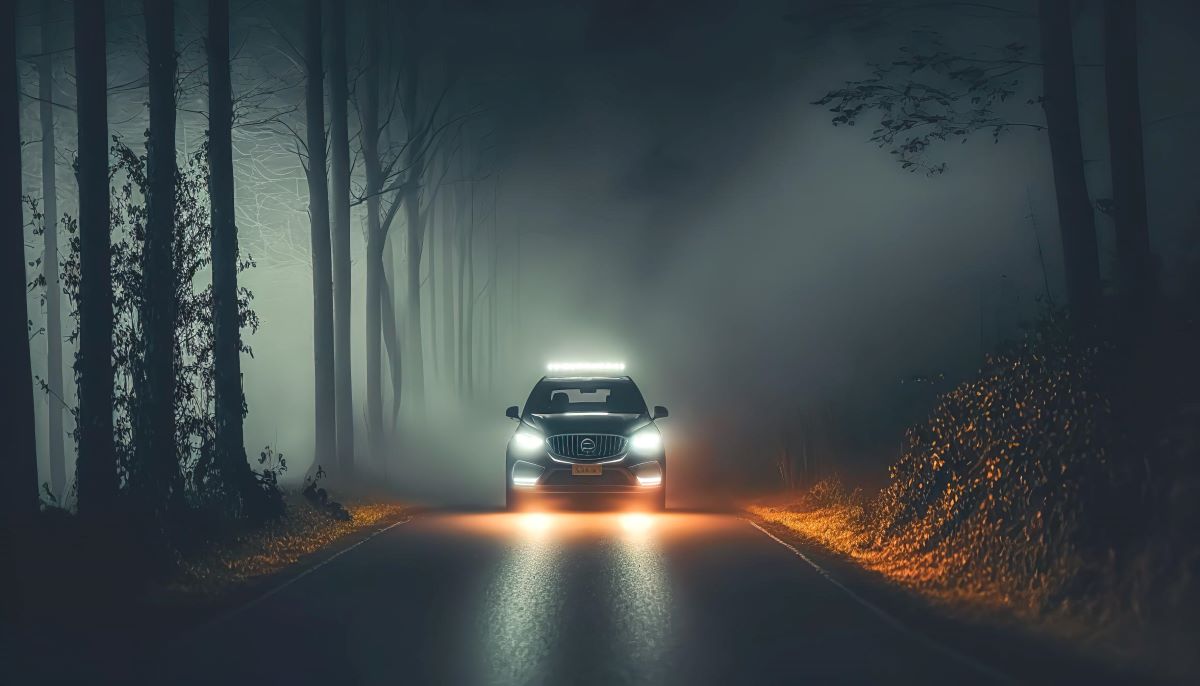What are Fog Lights and How Do You Use Them?

Driving in adverse weather conditions poses a significant challenge, and fog lights emerge as an asset in ensuring road safety. Driving with fog lights on is generally acceptable in such conditions, making it crucial for everyone to understand how to turn it on, its uses and the difference between driving lights and fog lights.
What are Fog Lights?
Fog lights are specialised lights mounted on vehicles to enhance vision in adverse weather conditions. They are positioned low on the front of the car and have a wide beam pattern, helping drivers see the road surface and any obstacles more clearly.
The effect of fog lights is to improve visibility in conditions where standard headlights may not be sufficient. They reduce glare and minimise the reflection of light off fog or rain droplets.
What are Fog Lights Used For?
Fog light can serve as a crucial asset when it comes to safety while driving, and it can be used for different purposes, such as:
- Visibility: Fog lights enhance visibility by cutting through fog, mist, and other weather-related obstructions, providing a clearer view of the road ahead.
- Safety: The primary purpose of fog lights is to improve safety by helping the driver navigate challenging weather conditions.
- Illumination: Fog lights illuminate the immediate surroundings of the vehicle, aiding in the identification of potential hazards and obstacles.
How to Turn On Fog Lights?
In bad weather conditions, it is very important to know how to turn on the fog lights and here are the very simple and easy steps:
- Step 1: Turn On Headlights: Before activating fog lights, ensure that the standard headlights are turned on. Fog lights should complement, not replace, regular headlights.
- Step 2: Activate Fog Light Button: Locate the fog light button in your car, often identified by a symbol resembling horizontal lines representing fog. Press the button to engage the fog lights.
- Step 3: Automatic Feature: Some cars have an automatic feature that activates fog lights based on sensor readings, providing added convenience.
When to Use Fog Lights?
Knowing when to put fog lights on is crucial for their effective use, here are some conditions where you can use the fog lights:
- Fog: Fog lights are most effective in dense fog, providing enhanced visibility for the driver and making the vehicle more conspicuous to others on the road.
- Heavy Rain: During heavy rain, when the combination of rain and darkness reduces visibility, fog lights can be beneficial in improving the driver's sightline.
- Dust Storm: In dusty or sandy conditions, where airborne particles can significantly hinder visibility, fog lights help cut through the dust and illuminate the road.
- Night: Using fog lights at night, especially in areas with limited street lighting, enhances overall visibility and contributes to safer nighttime driving.
What is the Difference Between Driving Lights and Fog Lights?

Driving lights and fog lights are both types of car lights, but the criteria that set them apart are:
| Criteria | Driving Lights | Fog Lights |
| Purpose | Provide long-range visibility at high speeds, enhancing overall visibility on well-lit roads. | Improve visibility in dense fog, rain, or other visibility conditions, reducing glare and scattering in adverse weather. |
| Mounting | Higher on the vehicle. | Lower on the front bumper. |
| Fog Reflection | Prone to causing glare in foggy conditions. | Designed to minimise glare in foggy conditions. |
| Beam Pattern | Narrow and focused beam, often with a longer throw. | Wide, flat beam focused on the road immediately in front of the vehicle. |
| Beam Cut-off | The sharp cut-off prevents glare. | Soft cut-off from reducing reflected light. |
| Visibility Conditions | Ideal for clear, open roads and highways, not optimised for low visibility scenarios. | Designed for low visibility conditions, providing better illumination in adverse weather. |
| Light Output | Higher intensity, covering a longer distance. | Lower intensity focused on immediate visibility. |
| Switching Usage | High beam for open roads, low beam for traffic. | A dedicated button for low-visibility conditions like fog. |
What are the Tips for Driving in Fog?
Understanding and applying the following tips is essential for safe driving in foggy conditions:
- Speed: In fog, reduce speed to match visibility, giving yourself more time to react to obstacles and potential hazards, fostering a safer driving experience.
- Braking Distance: Increase your following distance to allow for longer braking distances, helping avoid sudden stops and potential collisions in limited visibility.
- Roadside Reflector as Guide: Utilise roadside reflectors as visual guides, aiding navigation by maintaining a consistent distance from them to stay on course safely.
- Turn off Cruise Control: Disengage cruise control to maintain full control, allowing prompt reactions to changing road conditions and unexpected obstacles.
- Windshield Wipers and Defrosters: Use windshield wipers and defrosters to be operational, preventing the buildup of condensation that could obstruct your view.
- Minimise Distraction: In foggy conditions, limit distractions inside the car, focusing on the road and surrounding environment to enhance awareness and reaction time.
- Roll Down Windows: Improve auditory awareness by rolling down windows slightly, enabling better detection of approaching vehicles or other sounds.
- Use the Right Edge of Road: Stay oriented by driving on the right edge of the road, as this helps to minimise the risk of straying off course.
The use of fog lights is paramount for drivers navigating through adverse weather conditions. Utilising fog lights enhances visibility and contributes to overall road safety. By understanding when and how to use fog lights, drivers can confidently tackle challenging weather, ensuring a safer driving experience for themselves and others on the road.


















